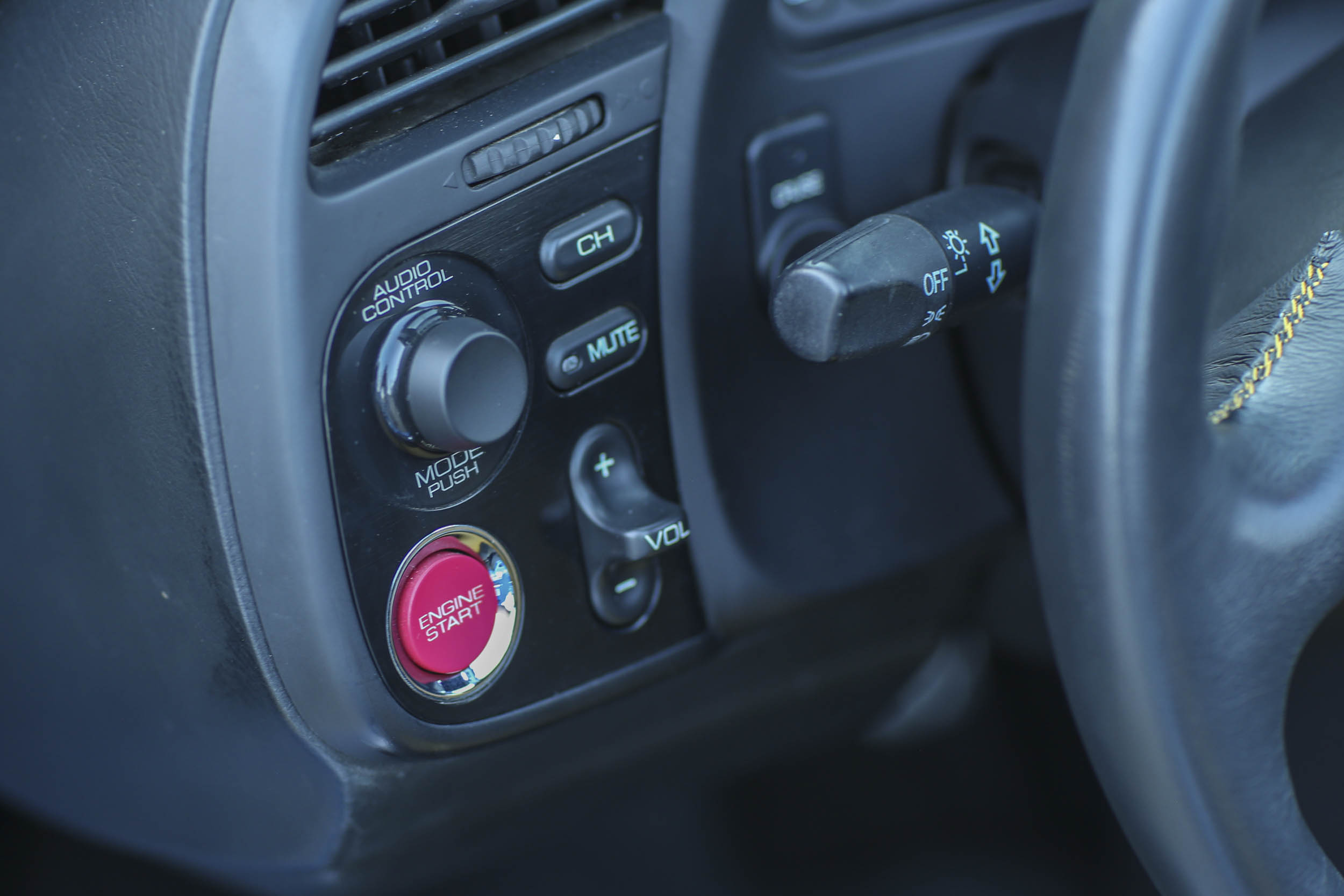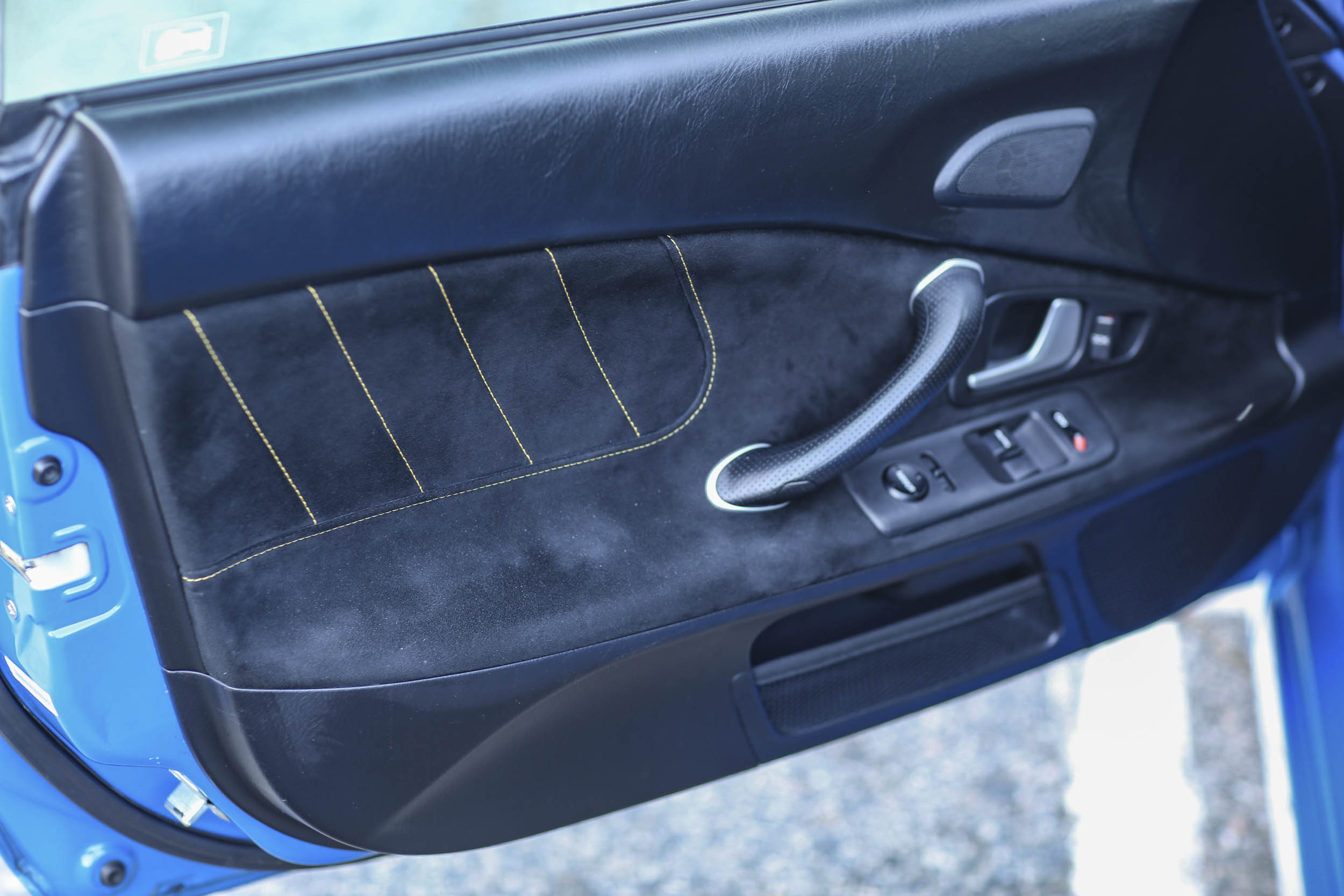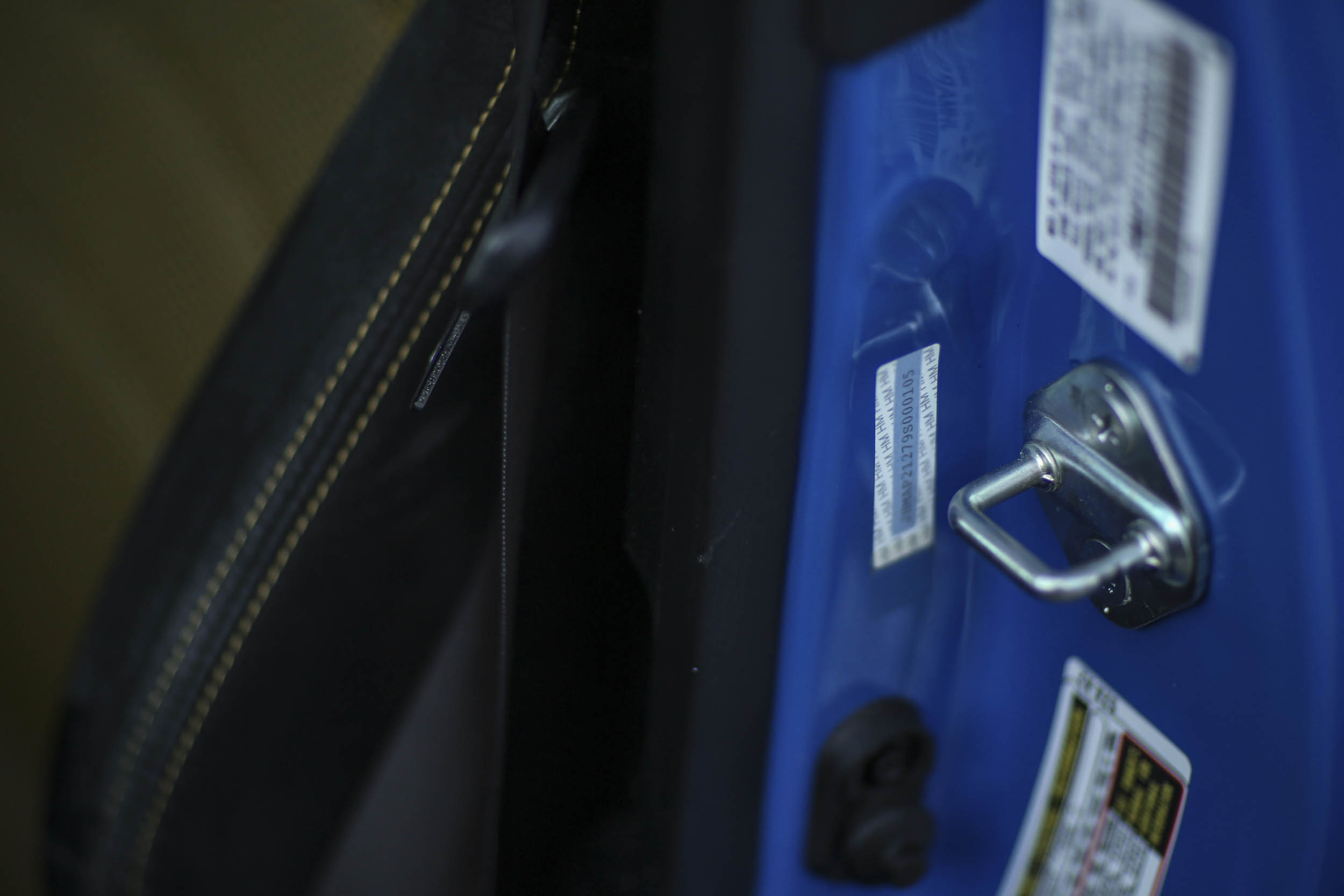Media | Articles
Your definitive Honda S2000 buyers guide
“The all-new HONDA S2000 is a 240 PS front-engined, rear-wheel drive, two-seater roadster, clothed in a sleek, muscular body,” the initial press release stated, in May of 1999. “Aimed at the sports car purist, its traditional configuration is underpinned in true Honda style by innovative, race-bred technology that is guaranteed to stir the emotions of performance motoring enthusiasts everywhere.”
And with that, a legend was born.
Named for its 2.0-liter engine that revved to 9000 rpm, the sports car’s release was clocked to illuminate the automaker’s 50th birthday. But it was also perfectly timed to capitalize on the tuner craze fueled by the 2001 release of the film The Fast and the Furious. A heavily modified S2000 then appeared prominently in the sequel, 2 Fast 2 Furious, and the roadster has remained a favorite of the tuner community, as well as with track-day junkies and autocrossers, for the past two decades.
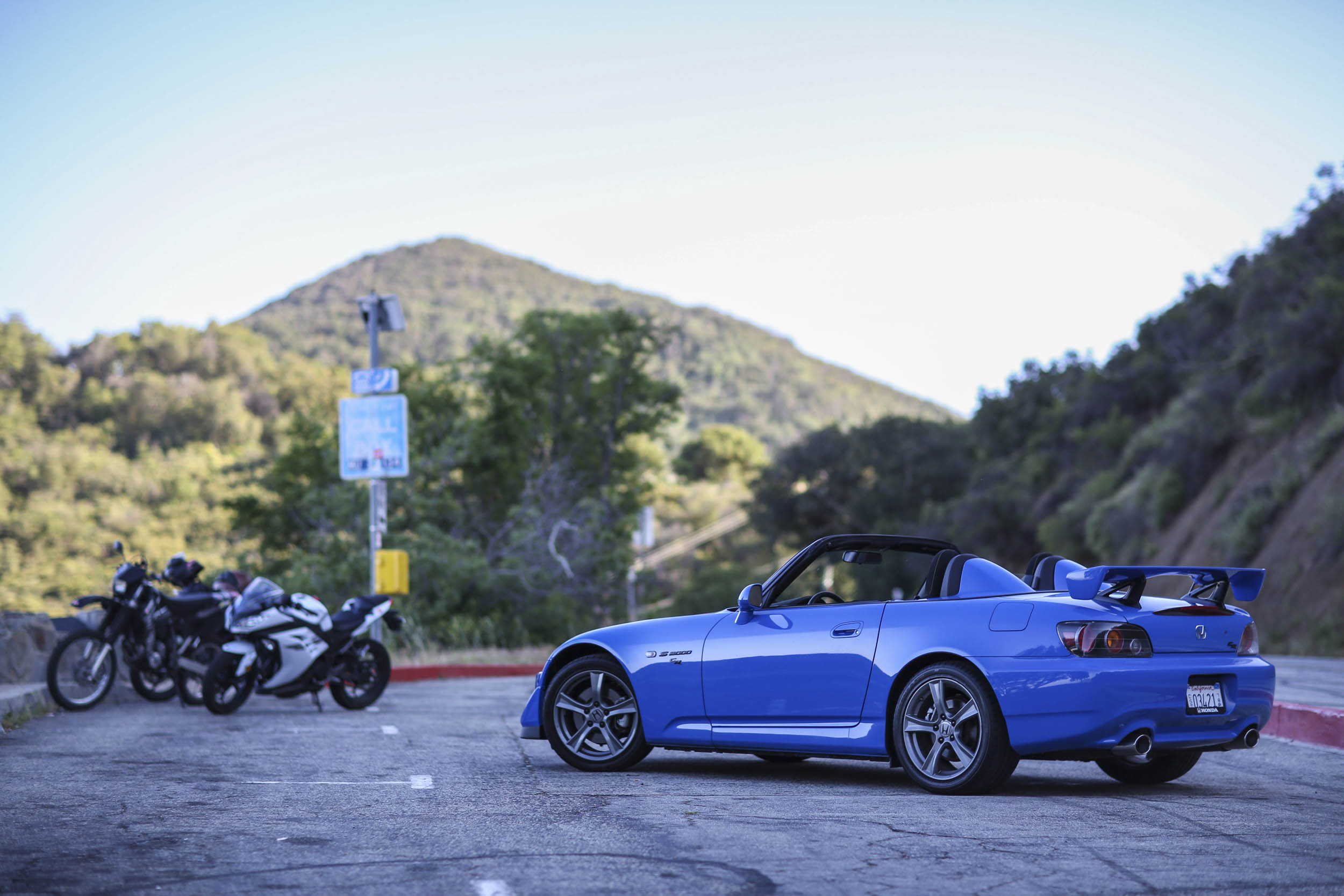
Americans purchased 66,547 S2000s in the model’s 10 years of production. Today they have become a hot commodity, especially if rare and unmodified, which are bringing the most money. Prices are rising rapidly, jumping 30 percent over the last five years for perfect, low-mileage stock examples.
Marketplace
Buy and sell classics with confidence
Three different models
Honda’s rear-wheel-drive, two-seat S500, S600, and S800 roadsters of the 1960s set the template for the S2000, which was first manufactured alongside the NSX supercar at Honda’s Takanezawa plant in Tochigi, Japan. Production then moved to the Suzuka facility in 2004. All S2000s look similar, but Honda did make changes throughout the 10-year production run, resulting in three distinct models.
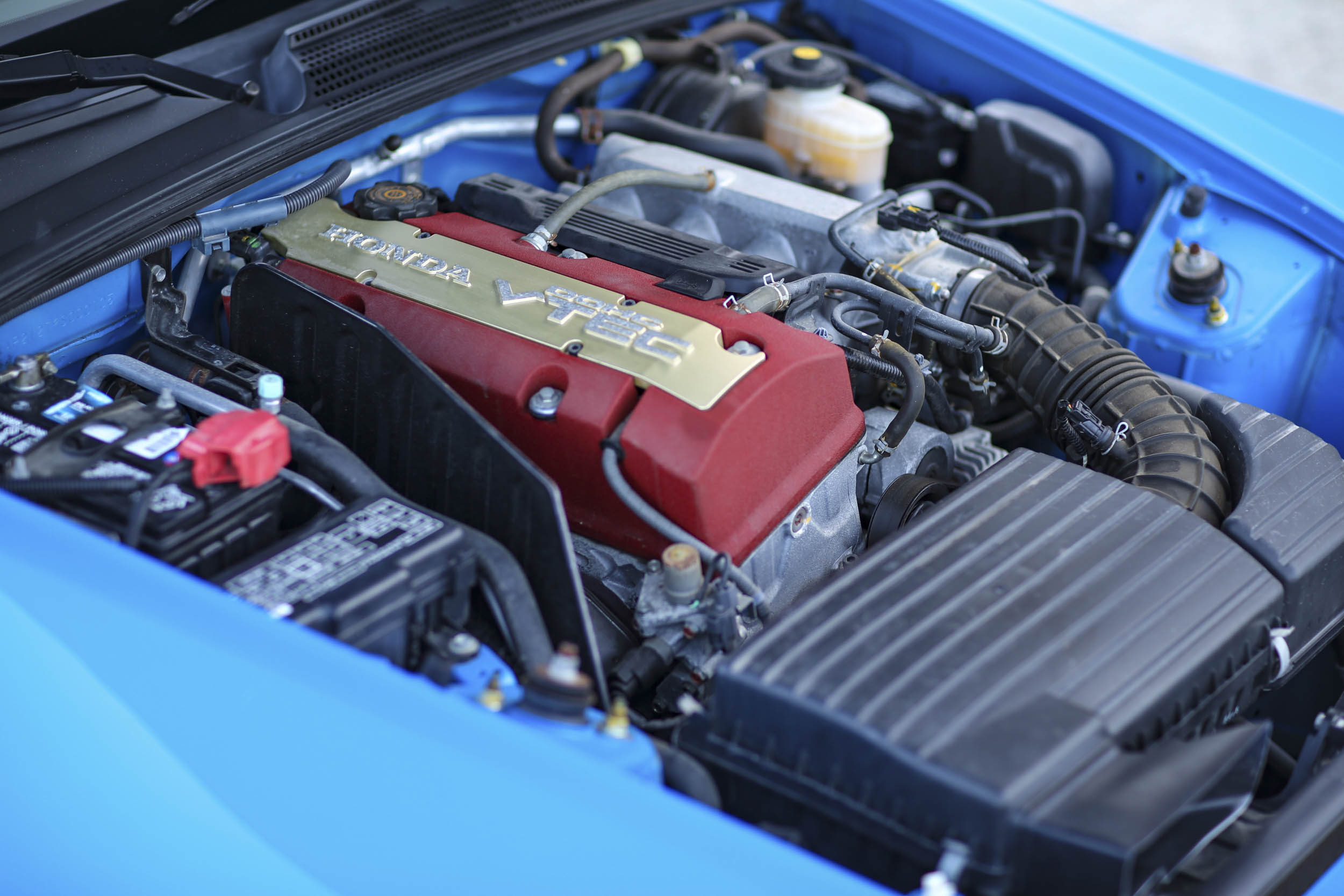

S2000 AP1
Cars built from 1999 to 2003—known as the AP1 generation—are powered by an all-aluminum 2.0-liter four-cylinder engine. That’s the one you’ve probably heard of, which revs to nine grand and is rated at 240 horsepower at 8300 rpm and 153 lb-ft of torque at 7500 rpm. Updates throughout this first generation of cars are minimal, although Honda did replace the soft top’s plastic rear window (which would yellow over time) with glass in 2002.
S2000 AP2
More significant changes came in 2004. These AP2-generation cars, which remained in production until 2009, received a larger 2.2-liter engine. It was still rated at 240 hp, but its redline was lowered to 8200 rpm to improve driveability, and its power peak dropped to 7800 rpm. There was more midrange response as well, with a new torque rating of 162 lb-ft at 6500 rpm.
Honda also mildly reshaped the front and rear bumpers, increased the wheel diameter from 16 inches to 17, and tweaked the rear suspension geometry to eliminate bump steer and a bit of the roadster’s twitchy handling. The exterior received new headlights, and the interior got some new trim including leather on the sides of the console, a silver cover for the audio system, changes to the shifter for smoother gear changes from the six-speed manual, and, of course, a new tach with the lower redline.


In 2006, the engine’s throttle switched to drive-by-wire, and Honda added traction control, which could be disabled with a button on the dash. The ECU also changed and could be reflashed for additional performance. (Before 2006 this would require a piggyback system or an ECU change.) The engine’s power rating was also revised to 237 hp to fall in line with a new ratings system.
Club racing with the Honda S2000
Knowing the end of the roadster’s production was on the horizon, Honda introduced the S2000 CR in 2008 and sold 699 examples in the United States during the car’s two-year run. (CR stands for Club Racer.) Honda dubbed it a factory-tuned S2000 and said, “The lighter, stiffer, and more aggressive overall design is engineered to maximize the S2000’s potential on a racetrack with the goal of substantially improving track times, chassis balance, and feel.”
The CR’s suspension is stiffer and its rear tires are wider. To shed weight, air conditioning and a radio were optional and the soft top was replaced with a fixed tonneau cover, plus an optional aluminum hardtop. Honda added a rear body brace under the tonneau cover for additional chassis rigidity.
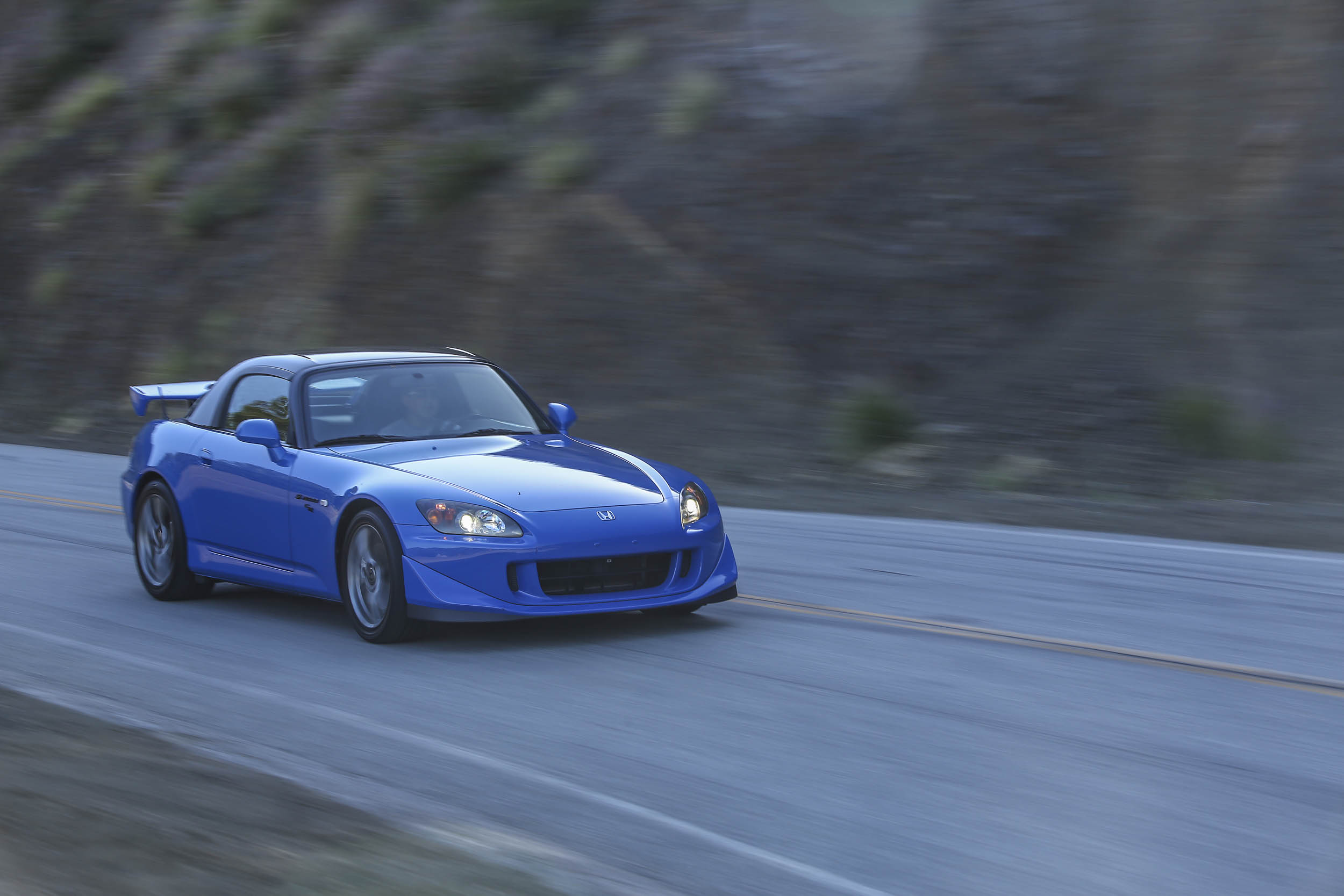
Honda also quickened the steering ratio from 14.9 to 13.8:1, lowered the shifter half an inch for shorter throws and 10 percent more effort, and replaced the shift knob with an aluminum ball. The exterior received a more aggressive front spoiler and Honda fitted the trunk lid with a massive rear wing, changes the manufacturer said “reduced lift and enhanced chassis balance at high speeds.” The AP2 engine was unchanged.
Watch for S2000 rust and accident damage
Mike Chang and Tony Kwan opened Evasive Motorsports in Chang’s home garage back in 2002. Chang owns a 2004 S2000, and the company has occupied 12,000 square feet in Santa Fe Springs, California, since 2011. Evasive works on anything, but it mainly focuses on sport compacts and has wrenched on hundreds of S2000s over the years. When we arrived at the shop, there were several S2000s around, from heavily modified examples to stock ones, as well as a Toyota 86/FR-S, a Mitsubishi Evo, a Subaru WRX, and a Ferrari 458.
“Rust can be a problem on these cars,” Chang says as we walk past an AP1 on his shop floor. “If you’re going to buy one, check the wheel wells, front subframe, frame rails, and quarter panels.”


Also look for the telltale signs of accident damage like poor paint quality, overspray, and welding that’s not up to factory quality. There’s also a sticker with the car’s VIN on the S2000’s major body panels, including its fenders, doors, and front fascia. Check the numbers. If these stickers are missing or painted over, there’s been some bodywork done along the way.
At about $300 a piece, the S2000’s large steel front fenders are expensive to replace, as are its aluminum hood. The aftermarket does offer replacements in many styles and materials including carbon fiber, but high-quality pieces cost even more with prices ranging from $500 to about $4000. Chang says these cars have become common in junkyards, which is another source of parts.
Soft tops, which are easily damaged or vandalized, are also pricy to replace as are the popular hardtops, which can bring $2500. The aftermarket offers carbon fiber replacements and can cost as much as $7000.
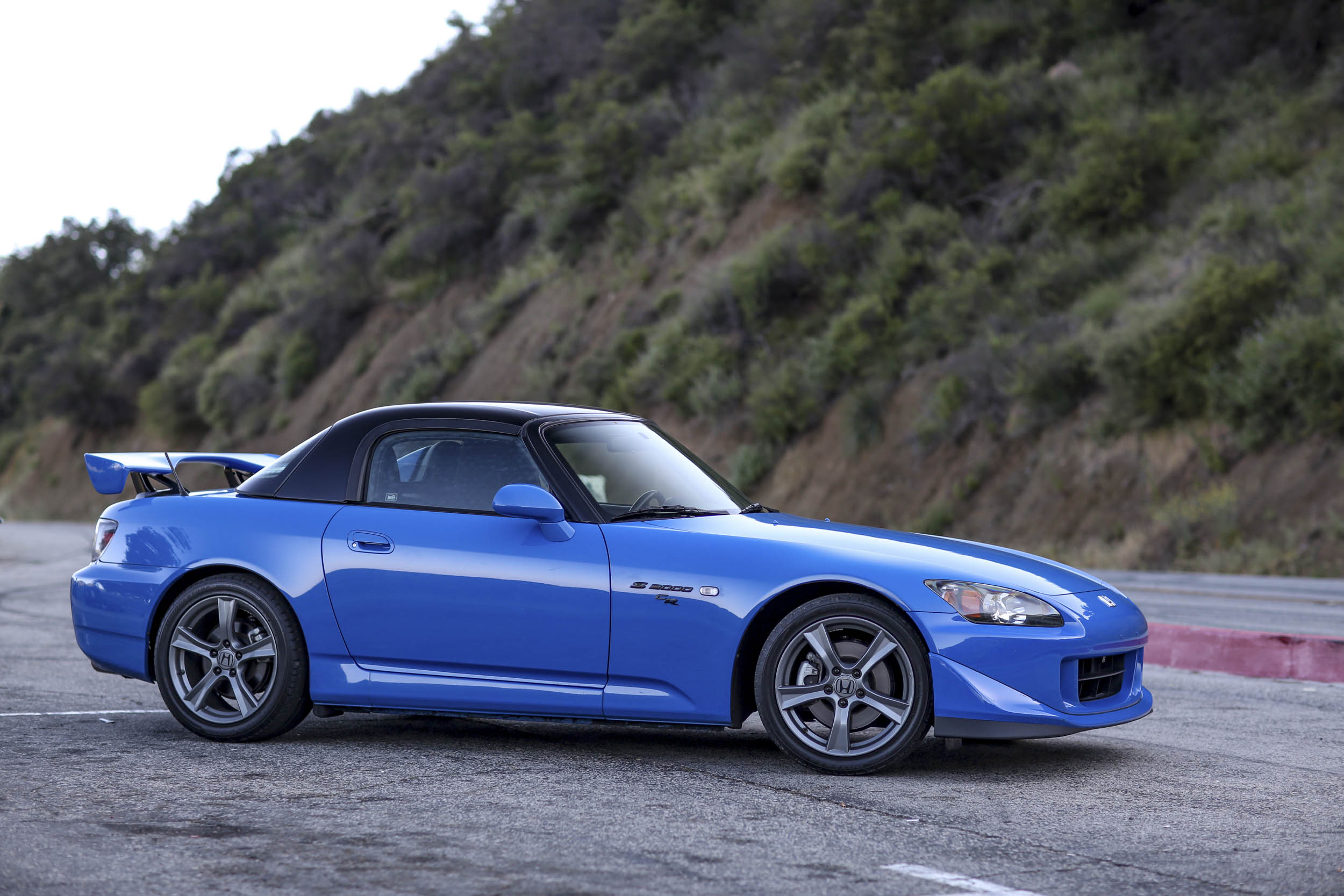
Another sign the car has been crunched is to check the alignment of its four-wheel independent suspension. “There are adjustments for camber, toe, and caster, but if a control arm or knuckle is bent, it won’t align,” Chang says.
Hondas are, of course, known for their durability, and the S2000’s interior wears well if cared for. Common modifications include aftermarket seats with more adjustment, audio systems, and shift knobs. Because the S2000’s steering wheel does not adjust, many also install an aftermarket steering wheel with a quick release which moves the wheel two inches closer to the driver. This improves the driving position but eliminates the airbag.
Stock suspensions are rare
There are more than 30 brands selling coilovers for the Honda S2000, including Öhlins, which is currently the hot setup, and according to Chang it’s hard to find a car with a stock suspension. Coilovers allow you to fine tune the roadster’s ride height and most have adjustable compression settings.


Aftermarket forged wheels are also an extremely common modification because they offer more size combined with lighter weight. Companies like Rays and Advan remain popular with S2000 owners. For more grip, most also add a high-performance summer tire like the Bridgestone Potenza RE-71R.
To make an early S2000 AP1 handle like the more stable AP2, the aftermarket also offers Bumpsteer Kits, which have become popular. These kits change the rear tie rods and reduce the amount of toe change, which eliminates the roadster’s tendency to oversteer and leave the road backwards. The kits are a good investment for between $150 and $350.
Rubber suspension and drivetrain components are easily sourced and often replaced with polyurethane units. However, they’re not cheap. Suspension bushing kits run from about $200 to $1200, while a new engine mount kit is about $350, and a differential mount costs $250.

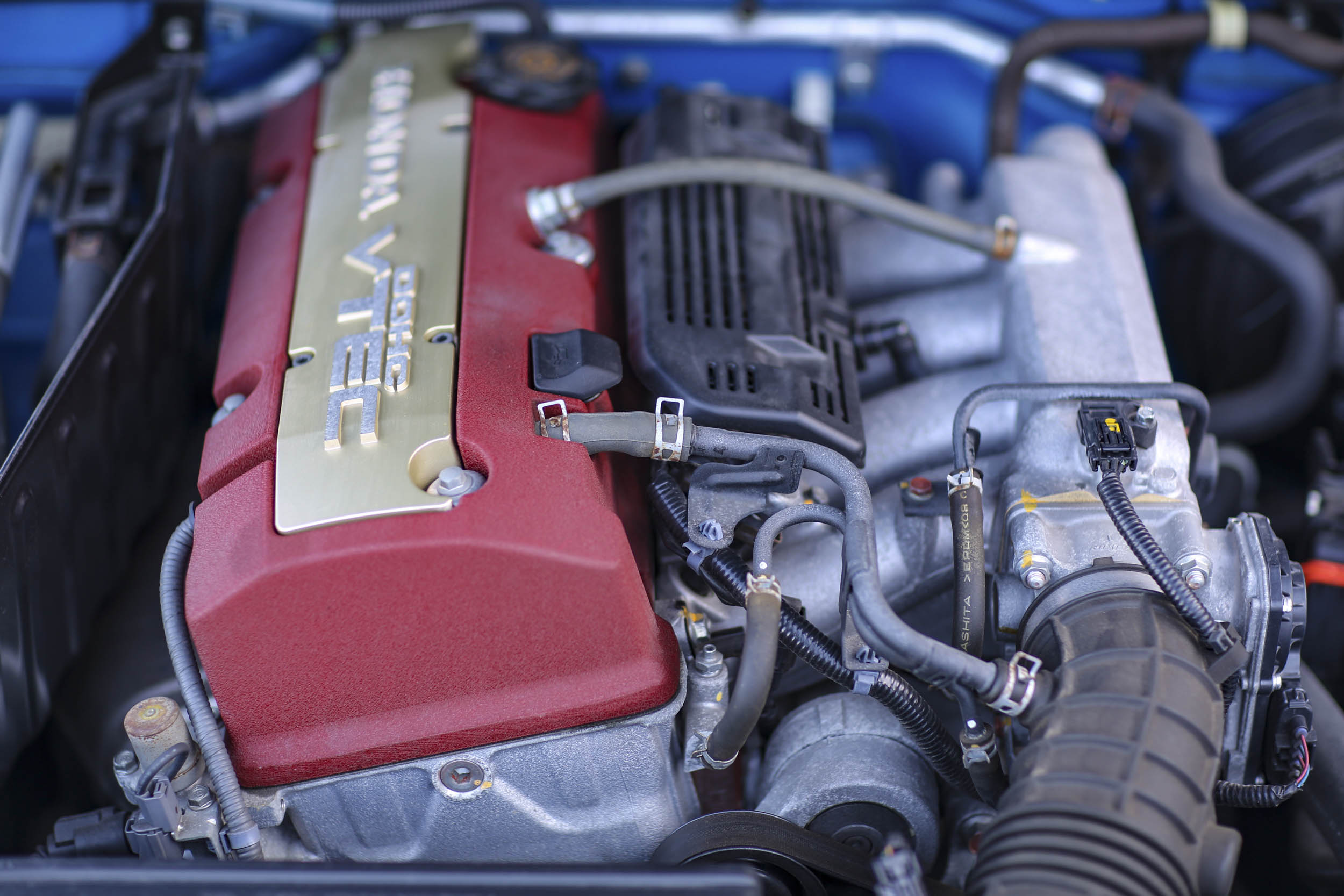
S2000 engine rebuild can cost $9000
“As they age it’s normal for these engines to consume quite a bit of oil,” Chang says. “I’ve seen healthy engine consume a quart every 3000 miles. Blowby is common and many guys install catch cans.”
Chang says there is no easy fix for this malady, just keep an eye on the oil level and use a high-quality full synthetic oil. He also says that the engines will last past 150,000 miles if well maintained, but you should always do a compression check before buying. Also, the timing chain tensioner should be replaced north of 105,000 miles. Common oil-related modifications include the addition of a baffle plate in the oil pan to prevent oil starvation during track use, as well as an oil cooler.
To do a full engine rebuild, which includes going over the cylinder head and replacing the valvetrain, Chang said you should expect to pay between $8000–$9000. However, you should know that the engine blocks cannot be bored without losing the special friction-reducing Fiber Reinforced Material (FRM) coating on the cylinder walls.

Headers, exhaust and a tuning change are extremely common, as is supercharging. The engines can make 450 hp at the wheels and still remain streetable. Another popular tweak is to retune the engine and lower the VTEC crossover from 6000 rpm to 4500, which radically broadens the engine peak power curve.
“With stock power the transmission and differential will last forever,” Chang says. “But tracking with big power and the transmission’s sychros get weak.” Many owners also change to a clutch with more clamping force as well as a clutch-type limited-slip differential. Lower gearing keeps the four-cylinder wound up. A 4.10 gear is stock but a 4.40 or 4.70 are common. “Anything lower than that is undriveable,” Chang says.
Values are rising
When it debuted, a new Honda S2000 cost $30,000. By the end of the run a standard car was priced at $34,935 with an S2000 CR costing $2k more.
According to Chang, 2004 and up AP2 cars are the most desirable because they offer the larger engine and redesigned suspension geometry. As is the trend with other popular Japanese sports cars, including the Acura NSX, Toyota Supra, and Nissan Skyline GT-R R32, S2000s without any modifications are now in the highest demand.


According to the Hagerty Valuation Tool, five years ago an extremely low-mile AP1 S2000 in #1 (Concours) condition—which means it’s the best in the world—would have cost an average of 30 grand. Today that car is valued at $39,000.
Cars in Excellent condition are considered #2 condition and are valued around $25,000, which is flat compared to five years ago. Prices on cars in #3 (Good) condition are also flat, and remain affordable between $12,000 and $20,000—most collector cars in general fall into this category. While the value of a #4 (Fair) condition car, which has visible flaws and possibly some modifications, remains under $10,000. For now. Cars with the optional hardtop bring more.Due to its unique look, additional performance, and low production numbers, the S2000 CR already demands a hefty premium. Last year a stock S2000 CR with optional air conditioning and audio system in #3 condition with 89,000 miles sold on Bring a Trailer for $24,000. As the market matures, the S2000 CR will gain importance and value, with the handful of cars sold without the A/C and stereo leading the way.

